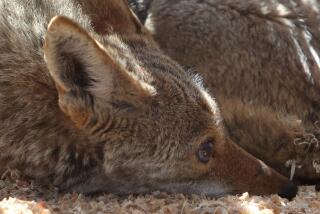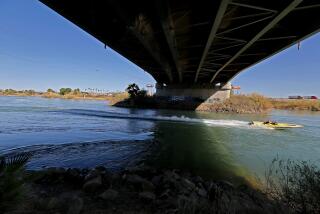From despised rodent to beloved icon, Texas Panhandle prairie dogs put on a show
A quiet stillness fell over the rugged parkland, and soon the show began.
One by one, furry brown creatures popped up from dirt mounds and surveyed the dusty plain.
Every few minutes, one stood on its hind legs and barked.
The sudden outbursts – which sound like a greeting but are actually part of the animal’s sophisticated sentry system -- brought startled shrieks of joy from onlookers.
“It’s like a squeaky toy,” said Sherrie Derler as she watched from behind the low-slung visitors’ fence. “I’m just so glad it’s here. Not a lot of places have something this unique.”
Welcome to Prairie Dog Town, a sanctuary for the once-maligned, now-celebrated little rodent that has bedeviled the Texas Panhandle for generations.
Back when farmers, ranchers and the federal government regularly hunted and killed prairie dogs as a nuisance, resident Kennedy N. Clapp and his wife had another idea.
In the 1930s, Clapp, who was chairman of the Lubbock, Texas, parks commission, created a refuge for prairie dogs, which was eventually relocated to what is now a baseball-diamond-size swath of Mackenzie Park, just north of downtown. Officials say it is the fifth top tourist draw to the city.
On a recent Saturday evening, a steady trickle of cars, some packed with families and children, pulled into the parking lot as visitors arrived for a look-see.
Nicole and Kevin Harris, who had made the two-hour drive from neighboring Midland to take care of an errand in town, stopped by on a detour.
“It’s really adorable,” said Nicole Harris, an eighth-grade teacher who had come to Lubbock to pick up 750 dozen Krispy Kreme doughnuts her students are selling to raise money for a trip to Europe.
“It’s a very Texas thing: C’mon, eat a steak, see the prairie dogs,” she said. Their terrier mix, Lily, was equally intrigued.
“We thought they were cute. And she [Lily] was enraptured,” said Kevin Harris after the couple and pooch took the walk around the park’s perimeter trail.
Prairie dogs once numbered in the hundreds of millions across the North American plain from Canada to Mexico, but their numbers have shrunk by 95%, according to Defenders of Wildlife.
The animals -- bigger than a squirrel, smaller than a fox -- are a burrowing creature with complex underground tunnel systems and an appetite for grass that ranchers complain competes with cows for grazing.
They hop like bunnies and, most remarkably, stand on their hind legs and shout commanding pronouncements.
“You were hearing all kinds of language,” said Steve Forrest, a prairie dog expert at Defenders, who explained that the sentries bark different warnings for aerial or ground predators -- and even have ones to identify humans.
Like a live-action game of whack-a-mole, the prairie dogs entertain visitors as they pop up and down from their mounds across the park’s flat landscape, hollering at their guests.
Then they often stand perfectly still.
As onlookers patiently scour the plains for the prairie dogs’ next move, it’s hard to know who exactly is on display. Are the visitors eyeing the prairie dogs like animals in a zoo, or is the stare-down happening the other way around?
“You’re watching me. I’m watching you,” said Roger Luebanos, a surgical technician, who as a kid had come to the park with his mom and now had brought Derler for a date.
“That’s his National Geo pose,” Derler said as one animal turned sideways for a profile view.
As the sun began to set, the couple quietly peered across the park, waiting for the next action sequence.
A fat gray and white cat hulked nearby, edging the perimeter of the parking lot. Cars became more scarce.
The animals quieted down and could no longer be seen, probably retreating to their burrows to sleep, as night fell on Prairie Dog Town.
For the latest from Congress and 2016 campaign follow @LisaMascaro.
For more, go to www.latimes.com/politics.
More to Read
Start your day right
Sign up for Essential California for news, features and recommendations from the L.A. Times and beyond in your inbox six days a week.
You may occasionally receive promotional content from the Los Angeles Times.







